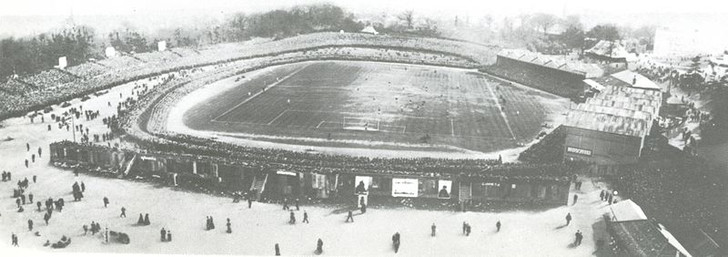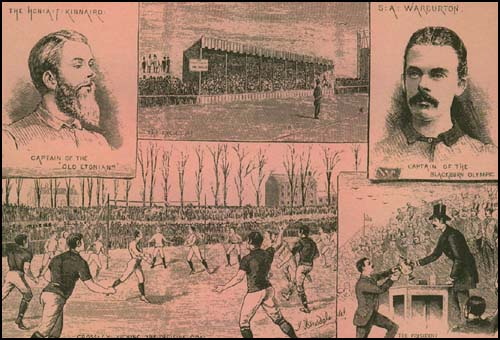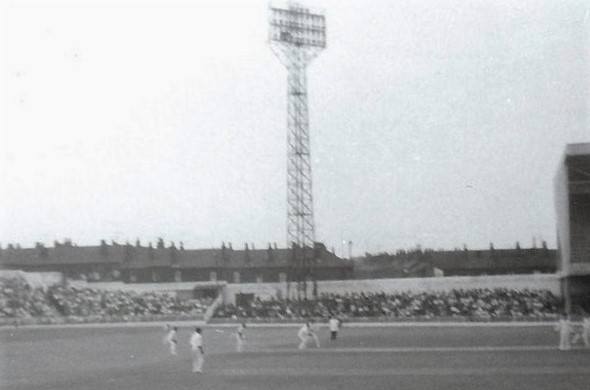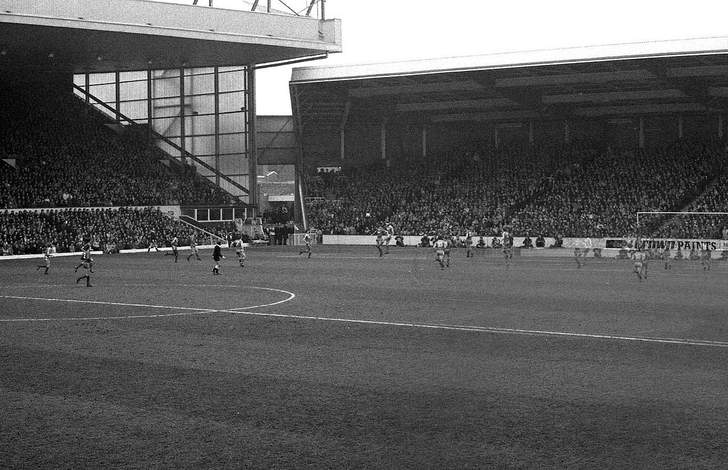
The Laws of the Game of football were officially codified by the Football Association in England in 1863.
Before that, though, the game was still played but it was more like a variation on what we know call rugby. It wasn’t clear what this new game would become or how popular it would be, so to begin with games weren’t played in purpose-built locations.
So where were they played? And what was the first stadium built specifically to host football matches?
Cricket and Rugby Pitches

When the game was first formed it was primitive in almost every sense of the word.
No one really understood what it was and people favoured watching cricket and rugby over it.
For that reason, most football games were played in cricket grounds or on rugby pitches to begin with.
This wasn’t limited to league matches, either. In 1872 the newly formed Football Association Cup held its first final in Kennington Oval, the famous cricket stadium that was built in 1845.
It continued to be played there for the following twenty years until the 1893 final was held at Fallowfield Stadium. That was an athletic ground and velodrome built in Manchester the year before.
First Football Grounds

There is some debate about which ground can call itself the ‘first’ to have hosted solely football. The debate tends to focus on both Bramall Lane and Deepdale, the homes of Sheffield United and Preston North End respectively. Bramall Lane opened twenty years before Deepdale but Preston fans claim that Deepdale has been used ‘continuously’ for football for longer.
Neither stadium was built specifically to host football matches, however. Deepdale was leased to Preston’s North End sport club in 1875 in order for cricket and rugby games to played on it. It was originally a farm, with the ground cleared and made accessible for sports after the lease was agreed. The first game of association football was played at Deepdale on the 5th of October 1878.
Bramall Lane was also used as a cricket ground long before a football was kicked on its hallowed turf. It opened in 1855 as a home for the local area’s various cricket clubs, of which there were six. It was believed to be ideally located as a ground to host cricket as it was far enough away from Sheffield’s industrial areas to mean that it was relatively free of smoke.
The first game of football was played at the Sheffield ground on the 29th of December 1862, a year before the rules were fully ratified and the Football Association was even formed. It was the main stadium in the city and, really, in the North of England, therefore it was used to host most of the area’s main matches for whatever sport needed it.
The First Purpose Built Stadium

As association football grew in popularity the grounds that hosted matches began to be used less and less for things like cricket and rugby and concentrated solely on what would later be called ‘the national game’. Supporters wanted their grounds to be built to make the most of their match going experience, so clubs looked for a way to oblige.
One of the most interesting developments within the game was taking place in Liverpool. Everton Football Club was formed in 1878 and to begin with they played their games on an open area of grass in the city’s Stanley Park. Supporters would just turn up and stand on the side, watching the game take place in front of them.
As it became more and more popular and fashionable to watch the game some land was donated to the club by Mr. J. Cruit in 1882, who had land at Priory Road that could house the necessary facilities for a club looking to turn professional. Two years later and he kicked them off his land because the crowds were too big and were making too much noise.
In nearby Anfield Road a site existed with proper covered stands that seemed ideal for Everton’s purpose. They moved into Anfield in 1884 and during their time there the Blues turned professional, helped to formed the Football League and won their first league championship. The capacity of the stadium also grew to accommodate 20,000 supporters.
A dispute with the majority shareholder of Anfield, John Houlding, began brewing in the early 1890s when he started increasing the amount of rent he charged the club. It began at £100 in 1889, went up to £250 the following year and was £370 by 1891, so Everton decided to leave Anfield for pastures new. Houlding, of course, now had a stadium with no team to play in it. Consequently he decided to form Liverpool Football Club, but theirs is another story.
Everton were a club without a place to play their games and were the first English team to have been formed in one place, developed a huge following but then needed to move somewhere else. Unlike so many other clubs around the country who had taken over the stadium that had belonged to a rugby or cricket club and converted it for their own needs, Everton had a chance to build a stadium specifically for use in football games.
So that’s exactly what they did.
George Mahon, a member of the Everton board, had leased land on Mere Green field in the Walton area of the city. It was excavated, levelled and a drainage system was installed underneath the newly laid turf. A local building company, the Kelly Brothers, were asked to build two uncovered stands that could sit 4000 supporters with a third stand big enough for 3000 fans also requested.
When it opened on the 24th of August 1892, Goodison Park had stands on three sides. It was the first purpose-built football stadium in England, though ironically no football was played there until the second of September, with visitors to the ground on that opening day treated to an athletics event, music and fireworks. Some would say that over a hundred years later visitors to the ground still don’t get to see much football…
